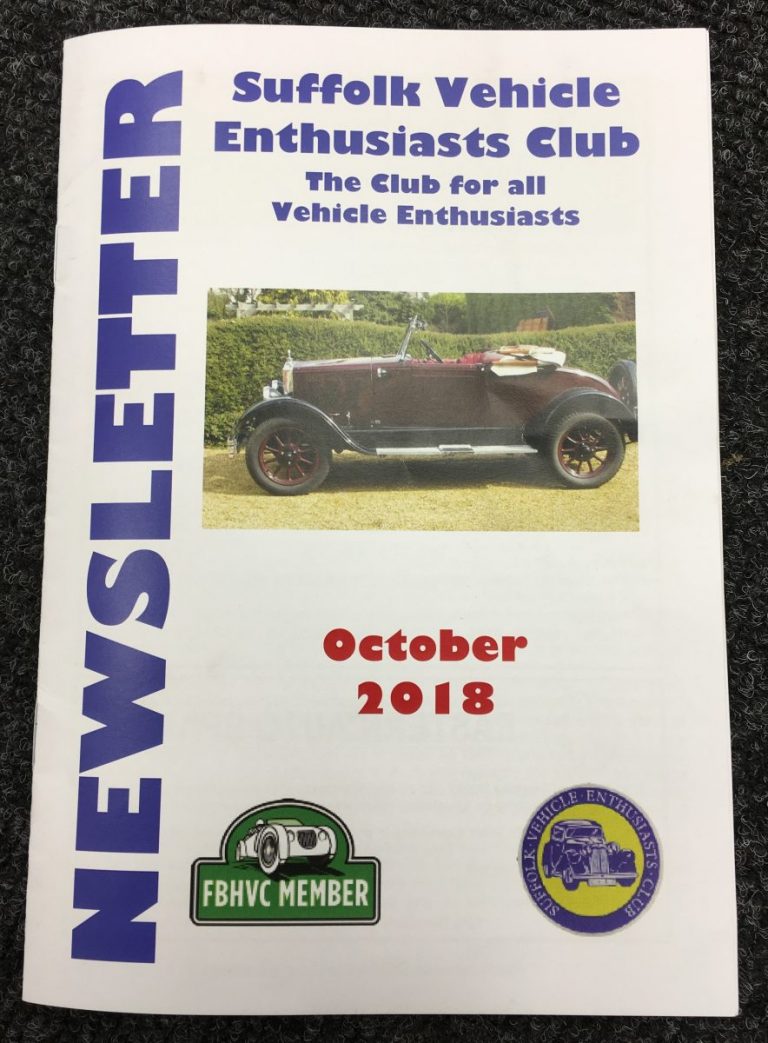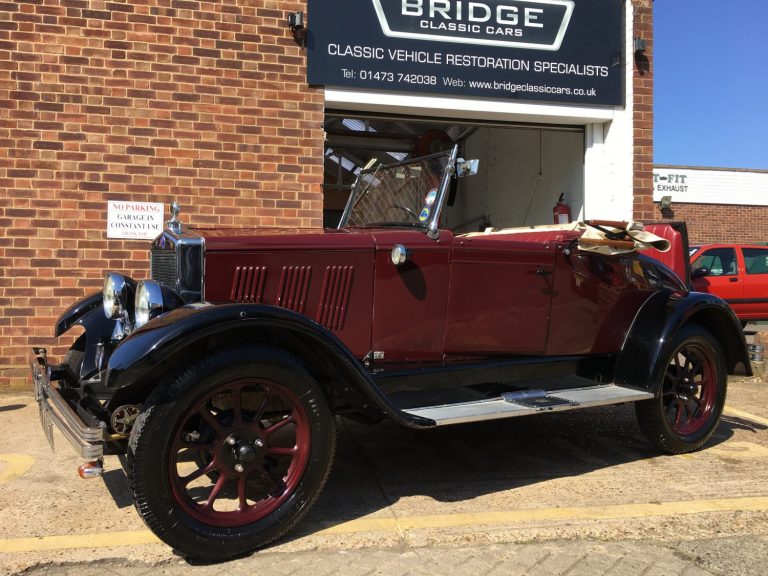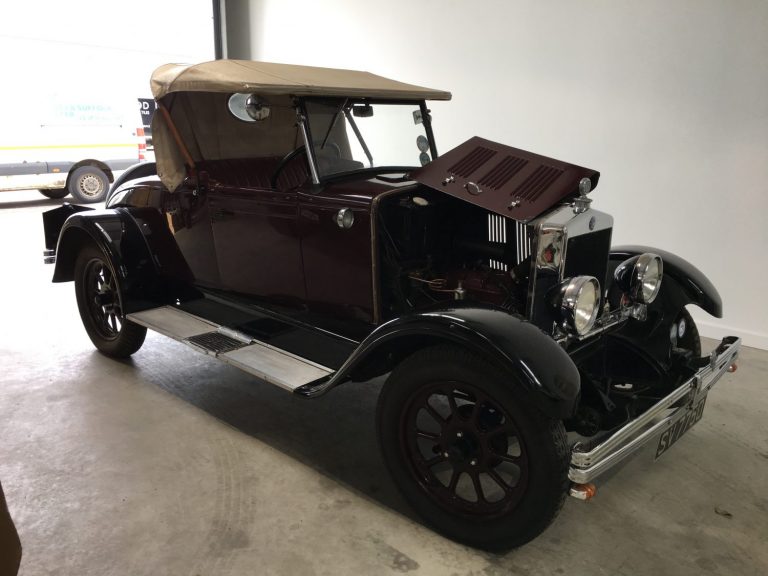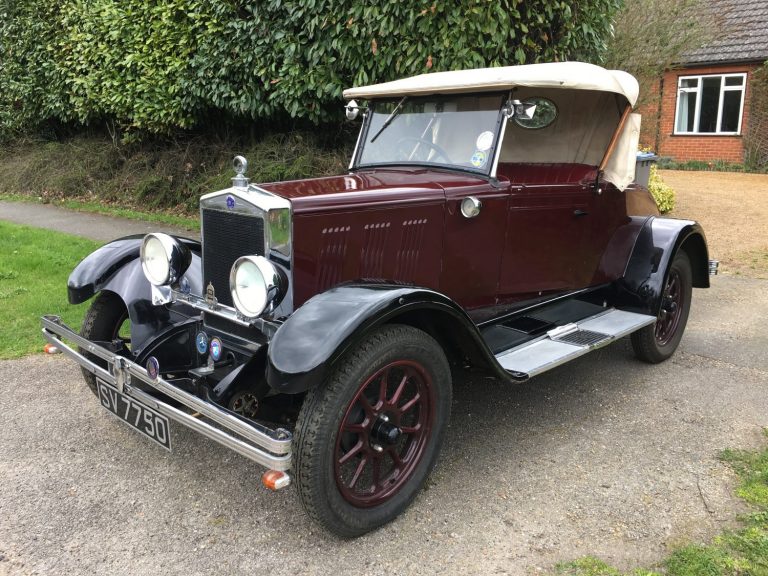
Suffolk Vehicle Enthusiasts Club – October 2018
Article featured in the Suffolk Vehicle Enthusiasts Club, The Club for all Vehicle Enthusiasts – October 2018 1929 Morris ‘Cowley’ Two Seater Tourer – by


Article featured in the Suffolk Vehicle Enthusiasts Club, The Club for all Vehicle Enthusiasts – October 2018 1929 Morris ‘Cowley’ Two Seater Tourer – by

In amongst the amazing history we have available on our 1929 Morris Cowley are some great photographs and we’ve even discovered a feature cover in a

Amongst the history of our 1929 Morris Cowley we have found a lovely little story: Simon’s Story – By Alan Broughton We hope that you

[vc_row][vc_column][vc_column_text]Many of us have seen this delightful car the shows and fetes around Woodbridge by its owner Rod ‘Holden’ Satchwell. The Morris has a very

We called in to see Mike and the guys at Shine Supply UK en route back to the Bridge Classic Cars offices and whilst showing him

Say hello to the newest member of the Bridge Classic Cars family, our 1929 Morris Cowley. Here we are collecting her from Woodbridge, Suffolk.
Article featured in the Suffolk Vehicle Enthusiasts Club, The Club for all Vehicle Enthusiasts – October 2018
1929 Morris ‘Cowley’ Two Seater Tourer – by Roger Brown
‘If you attend Classic car shows and Village Fete’s around Woodbridge and surrounding districts, very often you would have seen this delightful vintage tourer on show there driven by its owner Rod Satchwell.
The Morris has a very interesting history. It was on of a batch sent by Morris Motors to Australia in the late 1920’s. there, the chassis was received by Holdens who manufactered the open two seat body you see on it today. The Morris is also unique in that it has a ‘rumble seat’ where normally the boot would be; unfortunately the ‘rumble seat’ will only take two small people comfortably or one adult uncomfortably.
Until the Morris was repatriated to the UK in 2008 the Morris had spent its entire life in Australia and is believed that the car had four owners prior to returning to the UK, also the exact mileage it covered during its life in Australia is also unknown.
Essentially it is a very simple car and is well within the capabilities of the 1920’s owner/driver to maintain and service. This is stated in the 1929 ‘Th Morris Car Manual’ and, if you have a chance to look at the Morris closely, you can see why the manufacturer could make this claim.
The engine is a very simple 1400cc four cylinder side valve unit rated at 11.9hp with a thermo-syphen cooling system. The engine temperature is indicated by a ‘Calormeter’, a visual temperature gauge mounted on top of the radiator; control of the water temperature is by mixture control on the steering column.
The gearbox is a three speed non-synchromesh with reverse gear. Gear changing is done very slowly. The clutch is depressed, the engaged gear is disengaged and the gear lever moves the next gear slowly into mesh; only then is the clutch released and the Morris moves on.
A notable feature of the car are the 10 spoke ‘Artillery’ wheels shod with ‘Dunlop balloon tyres.
All four wheels have brakes but the braking system rod actuated all round with the hand brake operating a separate pair of brake shoes on the rear brake drums.
Finally the suspension has cart springs all round with additional lever arm dampers to smooth the ride on 1920’s roads. A delightful car to see at shows and seen driven on the road.
In amongst the amazing history we have available on our 1929 Morris Cowley are some great photographs and we’ve even discovered a feature cover in a 2012 Suffolk Vehicle Enthusiasts Club publication.
Amongst the history of our 1929 Morris Cowley we have found a lovely little story:
Simon’s Story – By Alan Broughton
We hope that you will find this interesting, it is the story of Simon, our simplified Cowley. In 1927-28 William Morris returned briefly to a previously unsuccessful sales idea, to offer a basic no frills Cowley without the optional extras.
This was known as the ‘simplified’ or plain Cowley. These cars came without front brakes, shock absorbers, spring gaiters, headlights, temperature gauge, clock, speedometer, wipers, horn or rear view mirror. All for a saving of £11.50 for the two seater and £14.00 for the four seater. You could only have a blue one in 1927 or a grey one in 1928! Although factory records show that a large number of plain Cowley’s were built, none were known to survive until ours was found. This is because over the years people have put the missing bits on and turned their plain Cowley into an ordinary one thus loosing it’s original identity.
Our car left the works like an IKEA flat-pack in March 27. The bodywork to be finished (built) in Australia. It therefore qualified as a locally built car and was exempt from import duty. It passed through the hands of various people and hit every tree stump and rock between Sydney and Wagga-Wagga before it was discovered in 1992.
Those of you with access to a copy of ‘The Automobile’ of April 1992 can read the story of that discovery.
It was acquired by a dealer who soon had it in a crate with a newly discovered Crossley on it’s way back here where prices were higher. At this stage a gentleman with a burning desire and enough brass to own a Crossley enters the story, and buys the contents of the crate unseen while its still on the high seas. This man was very ill by the time the crate arrived and the Morris was collected from the docks for him and pushed back into a very narrow shed at his house. Fortunately his health improved but not his love of Morris’s so for the next five or so years he would occasionally open the door, say, ‘oh yes that’s the Morris’ and close it again.
At that time in addition to our Morris’, we also had a V8 Ford Woodie which had impeccable manners as long as Christine drove it. Every time I took it out it went expensively wrong, never the same thing twice and never cheap. So a straight swap was arranged through a mutual friend and every one said we had gone mad. An ‘as found’ unrestored wreck for a rebuilt car with and MOT, but I was determined to see the back of that expensive animated pile of firewood!
The garage was so narrow that you could not get down the side of the Cowley and so nobody had got a good look at it. When the doors were opened our reaction was the same as everyone else’s, it’s a two seater and dickey with funny headlights But as we slowly towed it from its resting place, it became apparent that this was not quite what it seemed. Even the owner who had never seen it properly before offered to forget the whole deal if we wanted to but we stuck to our guns and were soon heading south with the Cowley on a trailer. I kept checking the rear view mirror and by the time we got home I had mentally rebuilt it and attended several rallies.
The car looked so complete and original that after the first glance we had kidded ourselves that this would be a rolling restoration, oh boy were we wrong! A life in a hot dry climate brought a whole new and unexpected set of problems. Whilst the metal does not rot, the rubber turns as hard as rock, wood cloth and leather crumble to dust, and the lack of rust actually causes the biggest problem. These cars were so over specified when they were built that in this country they usually rotted away before they wore out, however in Australia they just kept going.
I have never seen a car so totally and utterly worn out as this one. Every rivet that remained in the chassis was loose and although a steam clean of the back axle revealed an unblemished blue steel casing just as it had come from the press it could not be used because the ends where the wheel bearings fit were almost completely worn away. We were also surprised to find that although the outer body skin was mostly in place, at the back the panels were nailed to strips of charcoal and none of the wood remained! Subsequent research revealed that a previous owner’s house had been damaged by a bushfire back in the 60’s and although the back of the garage and car caught fire, the car survived because the petrol tank was at the front source non-mechanical parts was a great problem as everything from the screen back was built in oz and although it was basically the same shape as a two seater-and-dickey, it was in fact, three seater roadster with a boot, and the coach buiders brought all their supplies from America. The rear side panels for instance would appear to be Model A Ford crash repair panels, as they are pressings requiring something like a two hundred ton press to produce them where as the rest of body work is single curvature stuff that could be made on a set of hand rollers.
It also has a beautiful pair of bevelled glass wind deflectors fitted to the screen to make it wider. This is because at the seat it is Australian and three bums wide, but at the screen it is British and only two bums wide. Whilst lowering the tone of this narrative I could repeat the details of a discussion I had about out car with an elderly Australian lady whose family had Morris’s when she was young. She spoke with the cultured tones of one who had been to an English finishing School for young ladies, but she had not lost the Australian ability to call a spade a spade. She could not recognise the car from my description but as soon as I mentioned the Australian body work she said, ‘oh you’ve for a F**K truck’. After a few seconds of opened mouth disbelief from me she explained that British built cars had a solid section running across behind the front seat to give them extra strength where as Australian body cars did not. This was because the distances between towns was so great that you could not drive from town to town in a day and you did not want to sleep on the ground at night. So you removed the front seat, put a ‘midget’ net over the open boot lid and you had an insect proof double bed!
For those who like the technical bits this car had one more surprise up its sleeve. When the engine was stripped for rebuilding it was found to have several bits that should bits that should not have been there and they were all stamped with the No2. This is definitely the original engine and given the fact that the car is still in its original simplified spec. It seems unlikely that any past owners would have paid for expensive and totally unnecessary machining work to be done to the engine. Therefore we are left with the conclusion that this is an experimental engine, fitted at the works on a ‘suck it and see’ basis. We do not know that Morris was looking at different materials for the camshaft timing wheel to reduce clatter at tick over. he eventually settled for bronze but our engine has a silent running fibre one.
The internal oil ways are drilled into the block which means that the early and later oil pumps are not interchangeable, but our engine has the later type pump exactly three thousand engine numbers before they went into production. Finally the webs on the crankshaft have been hand ground to the same shape that the later ones were cast to.
Under layers of oil soaked road dust we also found a set of numbers stencilled upside down in white on the side of the engine.
Only three other cars have been found like this and nobody knows what they are. The best guess so far is that they are from the foundry to identity the mould at the start of a new batch. In this way any faults that showed up in the machining could be traced back to source and rectified. Engine numbers of course were not added until after the units were built up.
Many many hours of work went into the restoration with Christine doing all the upholstery, part of which was to design the hood. If you remember the comments about the seat, the hood frame when folded down has to be wide enough to go around the seat. But when it is up it has to form a wind proof seal onto the side widows which taper into the much narrower screen and with nothing left of the hood and no pictures to guide her, she has done a perfect job. the only thing we were unable to restore was the old transfer badge of the Australian Automobile which was on the original cracked windscreen.
With his lack of shock absorbers, Simon now happily bounces around the roads of Wales but he really does miss his Australian sun shine!
Alan and Chrstine Broughton
Swansea
After a little research on Alan and Christine we see that a Meteor owned by a Alan Broughton was seen at a past Swansea Historic Vehicle Register event.
[vc_row][vc_column][vc_column_text]Many of us have seen this delightful car the shows and fetes around Woodbridge by its owner Rod ‘Holden’ Satchwell. The Morris has a very interesting history. It was one of a batch of chassis sent by Morris Motors to Australia in the late 20’s or early 30’s. There the chassis was received by Holdens who manufactured the two seat body you see on it today. The Morris is also unique in that it has a ‘rumble seat’ where normally the boot would be; unfortunately the ‘rumble seat’ will only take two very small people or one adult in very cramped circumstances.
Until the Morris was repatriated to the UK in 2008 the Morris had spent its entire life in Australia and it is believed that the car had four owners during its life in Australia; what is not known however is the precise mileage of the Morris.
The basic mechanical specification of the Morris is as follows:
[/vc_column_text][/vc_column][/vc_row][vc_row][vc_column][vc_gallery type=”image_grid” images=”19148,19147,19146,19145,19144,19143,19142,19141,19140,19139,19138,19137,19136,19135,19134,19133,19132,19131,19130,19129,19128,19127,19126,19125,19124″][/vc_column][/vc_row]
We called in to see Mike and the guys at Shine Supply UK en route back to the Bridge Classic Cars offices and whilst showing him our new arrival he said he would spent a few hours working on the roof to see whether a bit of elbow grease might shift some of the grime that had built up over the years.
It was an unexpected drop off but I think the pictures speak for themselves.
Say hello to the newest member of the Bridge Classic Cars family, our 1929 Morris Cowley.
Here we are collecting her from Woodbridge, Suffolk.
Bridge Classic Cars are award winning Classic Car Restoration and Maintenance specialists. Your pride and joy is in safe hands with our expert Classic Car Technicians. Take a look at our awards here.